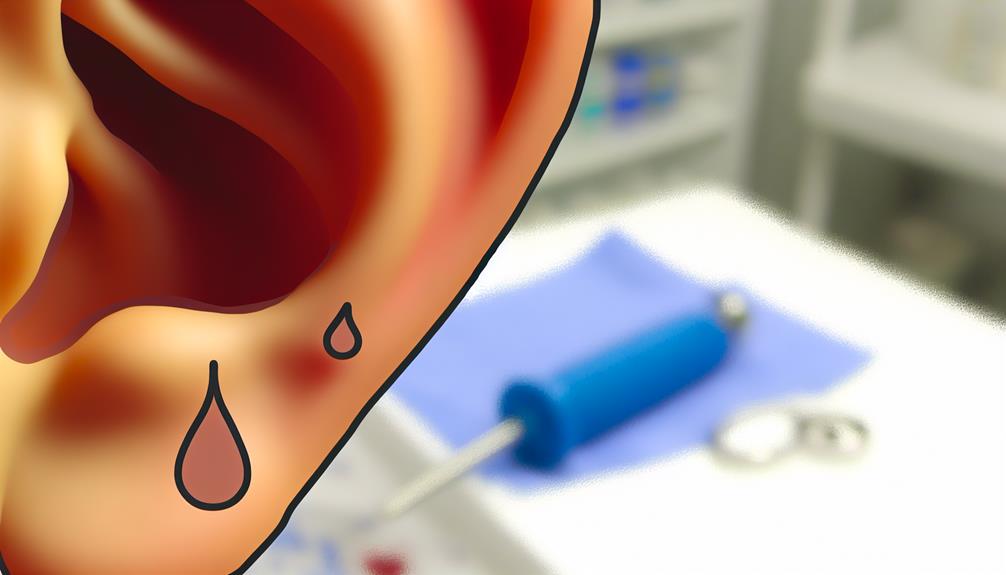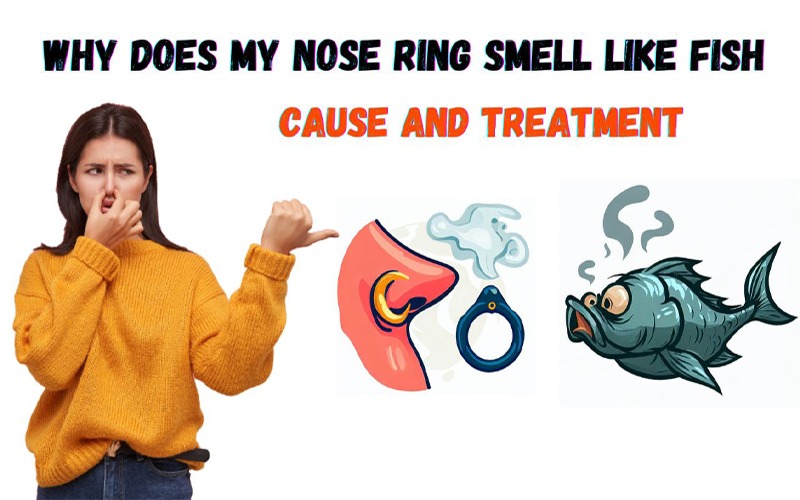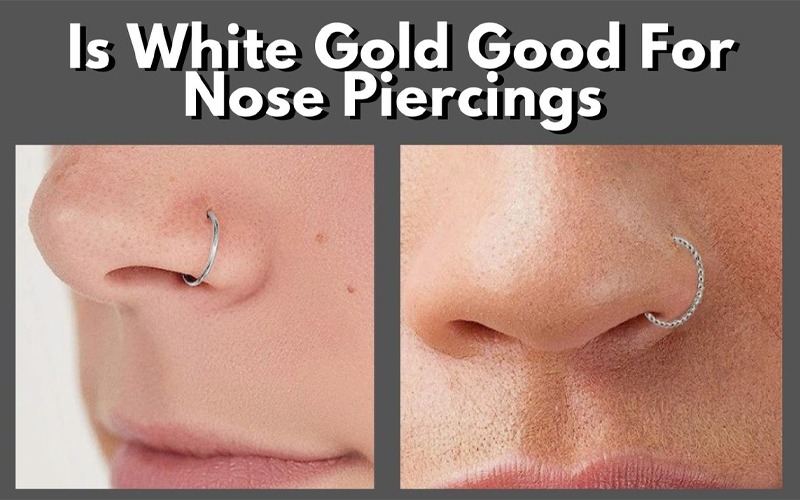The occurrence of bleeding from an old cartilage piercing can be both unexpected and concerning. This issue may arise due to a myriad of factors, ranging from physical trauma to underlying dermatological conditions. While occasional bleeding might be dismissed as a minor inconvenience, it is imperative to understand that such symptoms could be indicative of more significant complications. Therefore, identifying the cause is the first critical step in addressing the problem. In the following discourse, we will explore the various triggers that may lead to bleeding in healed cartilaginous piercings and scrutinize the appropriate initial care steps to mitigate the issue. We will also examine the preventive measures necessary to avert infection and discuss the circumstances under which professional medical intervention becomes a necessity. Furthermore, a comprehensive look at aftercare practices and ongoing monitoring of the piercing site will be presented, offering a holistic approach to managing and ultimately resolving this perplexing concern.
Identifying the Cause
To accurately determine the reason for bleeding from a cartilage piercing, it is crucial to assess both external factors, such as trauma or jewelry issues, and internal factors, like individual susceptibility and health conditions. Bleeding from a new piercing during the healing process can be disconcerting, but understanding the various causes is essential for addressing and preventing further complications.
Allergic reactions to earring materials can lead to irritation, manifesting as contact dermatitis, which may result in bleeding. Friction from the jewelry itself can aggravate the piercing site, causing similar issues. It is important to choose hypoallergenic jewelry and ensure a proper fit to minimize these risks.
Furthermore, trauma to the area, such as accidental bumping or excessive touching, can cause granulation tissue to form, leading to small cuts and subsequent bleeding. Blood vessels in the ear are delicate and can be easily disrupted, especially by medications like blood thinners or lifestyle factors like alcohol consumption, which both increase bleeding susceptibility.
Skin conditions, such as seborrheic dermatitis, may exacerbate itching and the risk of bleeding. In such cases, minimizing manipulation of the piercing and maintaining a clean environment are key. Gentle cleaning with soap and water, avoiding harsh materials or strong water pressure, and applying ointments can aid the healing process.
To prevent bleeding, it is advised to avoid sleeping on the pierced ear to reduce irritation and to refrain from touching the piercing unnecessarily. By understanding these causes and adopting appropriate preventive measures, individuals can enjoy the freedom of self-expression that comes with body modifications, while ensuring the health and proper healing of their piercings.
Initial Care Steps
When addressing a bleeding cartilage piercing, the first step is to apply gentle pressure with clean, sterile cotton gauze, which helps control the bleeding while minimizing further irritation. This action should be performed with care to avoid exacerbating the situation. It is important to note that freedom of expression includes the freedom to adorn one’s body as one chooses, but this also comes with the responsibility of proper aftercare.
After the bleeding is managed, resist the temptation to touch or manipulate the piercing. Doing so can lead to further complications and delay the healing process. It’s essential to adhere strictly to the aftercare instructions provided by the piercing studio to foster a safe and swift recovery. In the first few days following the procedure, it is especially crucial to maintain a hands-off approach unless cleaning the area.
Cleaning should be conducted with mild soap and water or a saline solution, as advised by the piercing professional. Be gentle to avoid irritation, and rinse the area thoroughly to remove any soap residue, which can impede the healing process. To support the body’s natural healing capabilities and help the piercing fully heal, a thin layer of over-the-counter antibiotic ointment can be applied. This step is a precautionary measure to prevent infection, a critical aspect of aftercare.
If the bleeding does not subside or if symptoms of infection such as excessive redness, warmth, or unusual discharge occur, it is imperative to seek guidance from the piercing studio or a healthcare provider. Such vigilance ensures that the piercing remains an embodiment of personal freedom rather than a source of distress.
Preventing Infection
Ensuring that a cartilage piercing remains free from infection requires diligent adherence to proper aftercare protocols. This is crucial not only for new piercings but also for older piercings that may suddenly start bleeding. The skin around a piercing can be prone to infection if not cared for correctly, and this can lead to complications that impede the freedom you seek from expressing yourself through body art, like nose piercings.
To prevent infection, one should follow guidelines recommended by Public Health authorities that emphasize cleanliness and careful monitoring of the piercing. Here is a concise guide that may help:
| Aftercare Step | Description |
|---|---|
| Clean Regularly | Gently cleanse around the piercing with saline solution or soap recommended by your piercer. |
| Avoid Touching | Minimize contact with the piercing to prevent the transfer of bacteria from hands to the skin around the piercing. |
| Observe Changes | Watch for signs of infection, such as increased redness, swelling, or discharge. |
| Use Appropriate Jewelry | Ensure that the jewelry is made of hypoallergenic materials and is the correct size to avoid irritation. |
| Stay Healthy | Maintain overall health to support the body’s healing process, including a balanced diet and adequate rest. |
Following these steps can help maintain the integrity of your cartilage piercing and support the surrounding skin in remaining healthy and free from infection. Remember, your autonomy in managing your body modifications is key to enjoying them without the constraints of health issues. Stay informed and proactive in the care of your piercings to ensure they remain a symbol of your individuality and freedom.
When to See a Professional
While diligent aftercare can substantially reduce the risk of complications with a cartilage piercing, persistent bleeding or signs of infection should prompt a consultation with a healthcare professional. It’s your body’s way of saying that something isn’t quite right, and it may require professional attention to ensure your piercing heals properly and maintains the personal freedom of expression you sought when getting pierced.
For those who value their independence and the ability to express themselves through body modifications like piercings, understanding when professional help is needed is a crucial aspect of responsible self-care. Here are key indicators that it’s time to seek medical advice:
- Excessive Redness or Swelling: If the area around your piercing becomes increasingly red or swollen, especially after the initial few days post-piercing.
- Persistent Bleeding: Bleeding that continues beyond the first few days or suddenly starts after a period of no bleeding, particularly if it’s been more than three weeks.
- Discharge with Odor: Any unusual discharge, especially with a foul odor, coming from the piercing site.
- Pain or Heat: Persistent or worsening pain, or a sensation of heat emanating from near the piercing.
- Fever or Illness: Symptoms like fever or feeling unwell, which might indicate a systemic infection.
Aftercare and Monitoring
Proper aftercare is essential for the healing process of a cartilage piercing and involves routine cleaning, monitoring for signs of infection, and avoiding activities that can irritate the area. It’s a commitment that respects your body’s rights reserved to heal itself, but with your attentive support. Piercings take their own time to heal, often ranging from a few months up to a year, and patience is key.
The golden rule in piercing aftercare is cleanliness. Using a saline solution or a gentle, non-alcoholic cleanser, carefully clean the pierced area twice daily. This is where your freedom to maintain your piercing’s health comes into play—ensure your hands are thoroughly washed before touching the piercing, and avoid over-cleaning as this can delay healing.
Monitor the piercing for any signs of trouble. It’s normal for the area to be red, slightly swollen, or tender right after the piercing, but these symptoms should gradually subside. Theres always a risk of infection, so keep an eye out for increased pain, persistent redness, swelling, or any unusual discharge. If these symptoms arise, seek professional advice.





